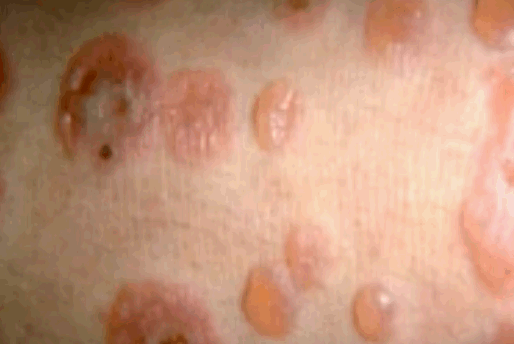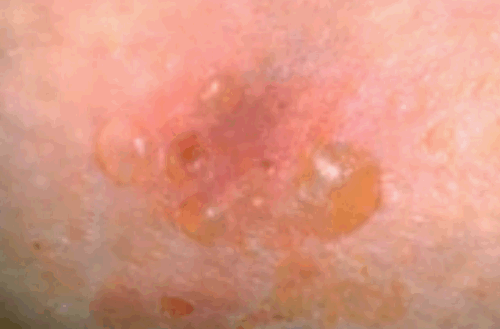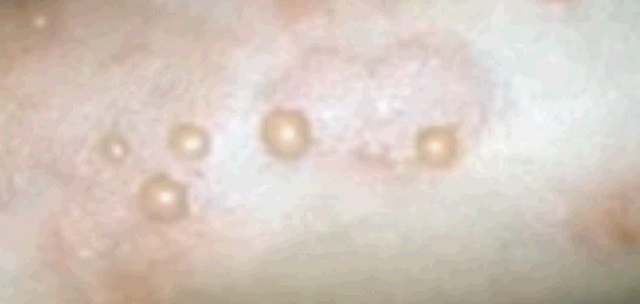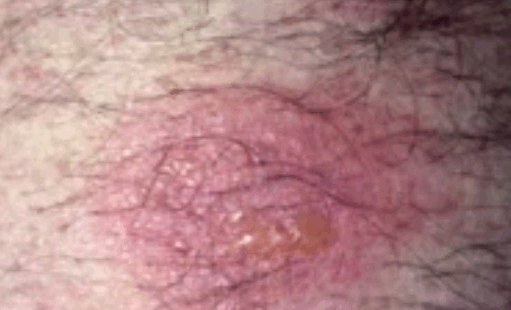Bullous pemphigoid is a rarely recorded skin irregularity wherein large fluid filled blisters appear on the skin region that flexes. Such skin regions often include lower stomach, armpit and upper thigh area. This condition is common in people above 60 years of age. Bullous pemphigoid is often caused due to immune system attack on a thin layer of skin tissues right underneath the outer skin layer. It is not known what causes such abnormal action of immune system. Other areas where these fluid filled blisters may appear include mouth conjunctivae and passage of the nose. Treatment often includes suppressing immune system using medicines.
Bullous pemphigoid symptoms
Two of the common symptoms experienced when affected with bullous pemphigoid include burning sensation as well as intense itching of the affected skin region. When the condition is associated with mucous membrane of the mouth it may result in burning, acidic food sensitivity, pain and peeling off of the afflicted inner lining of tissues. This medical irregularity may also make eating difficult while the sufferer may also experience coughing. Nosebleeds are also considered as symptoms of the condition when the inner nose is affected. It is recorded that the disease may aggravate or even alleviate over time.
Bullous pemphigoid causes
The actual factor that causes bullous pemphigoid is not certainly understood though the cause is widely believed to be malfunctioning of immune system. Immune system often produces antibodies to fight bacteria and other foreign invaders which are potential threat to the body. For an unidentified reason the immune system may produce antibodies against particular tissues in your body. In this disease the immune system develops antibodies to basement membrane of skin which is a thin fiber layer that aligns the epidermis (outer layer) with dermis (immediate next layer to epidermis). These antibodies results in inflammatory activities that eventually lead to fluid filled blisters.
It is also said that the condition may randomly appear with no certain factor triggering the condition. Some cases may occur due to medicinal side effect. Prescription medications such as etanercept, furosemide, penicillin and sulfasalazine may lead to bullous pemphigoid. Also there are treatments such as ultraviolet light therapy that is used for treating skin issues may also lead to the condition. Radiation therapy which is also suggested for cancer treatment is said to be a contributing factor for the onset of the condition.
Diagnosis of Bullous Pemphigoid
To diagnose the condition a biopsy of the affected tissues is conducted. Based on the result of this biopsy a decision can be taken. The biopsy with content pathological assessment can indicated inflammation of the afflicted skin. Addition assessment of the biopsy sample may also indicate anomalous antibodies in the basement membrane of the skin or even in tissues of mucous membrane. In order to determine circulating antibodies in the basement membrane blood tests may be conducted. In some cases the condition may also be associated with other physical issues such as SLE or Systemic Lupus Erythematosus and cancer.
Bullous Pemphigoid treatment
The focus of bullous pemphigoid treatment remains on healing affected skin region as fast as possible and relieve associated symptoms. Patients are also prescribed combination of medications to control those immune system activities that causes inflammation. Some of the common drugs used for treating this dermal condition include:
Anti-inflammatory medicines
There are several anti-inflammatory drugs available which can be used in combination. Some example of Anti-inflammatory medicines include methotrexate, rheumatoid arthritis drugs, dapsone, leprosy drugs etc. there are also some antibiotic which have anti-inflammatory properties.
Corticosteroids
The most common treatment for bullous pemphigoid is prednisone. This is an oral medicine. It is also believed that long term use of prednisone can make the user prone to diabetes mellitus, hypertension, high cholesterol level, cataract and weaker bones. Corticosteroid is also available in tropical solution form which can be rubbed on the affected skin region which may also lead to fewer side effects. For less complicated cases, class IV steroids like Clobetasol and Halobetasol can be effective. Your doctor is the best person to recommend a line of treatment with respect to corticosteroids.
Immunosuppressants
Immunosuppressant drugs can inhibit the production of WBC or White Blood Cells that are significant for fighting diseases. Example of immunosuppressants includes azathioprine and mycophenolate mofetil. Immunosuppressant is often used as substitute to reduce the dosage of prednisone that you use.
Recent studies have indicated that rituximab has been found to aid in cases wherein standard therapy has no effect. Once the bullous pemphigoid is completely cured the treatment can be stopped. The condition can have various consequences. In severe cases the condition can prove to be fatal if not treated well; especially if the condition is associated with pharynx and air passage.
Self care for Bullous Pemphigoid
Blisters and use of corticosteroid tropical creams may turn your skin delicate. You need to cover broken blisters with sterile dressing to ensure that the region does not get infected. The condition may get aggravated if the skin region is kept exposed to sunlight for long time. If bullous pemphigoid blisters affects your mouth then be selective with what you eat. Do not eat hard foods like raw fruits and vegetables, avoid too junk food. The condition may lead to osteoporosis which is why your doctor may recommend you to take Vitamin D supplements and calcium tablets. Apply a good quality sun protection cream with SPF 30 for skin care.
Bullous Pemphigoid Pictures



